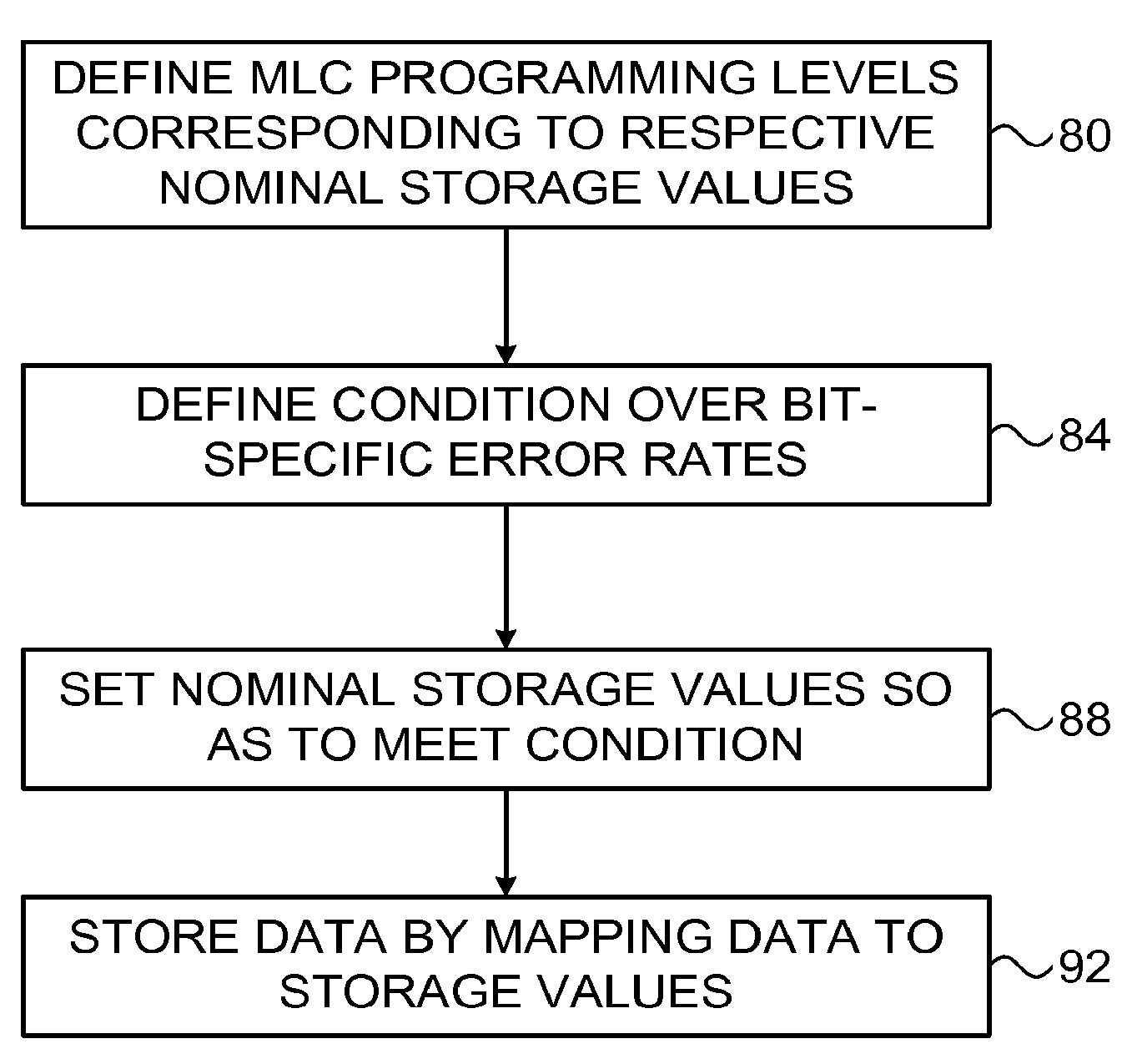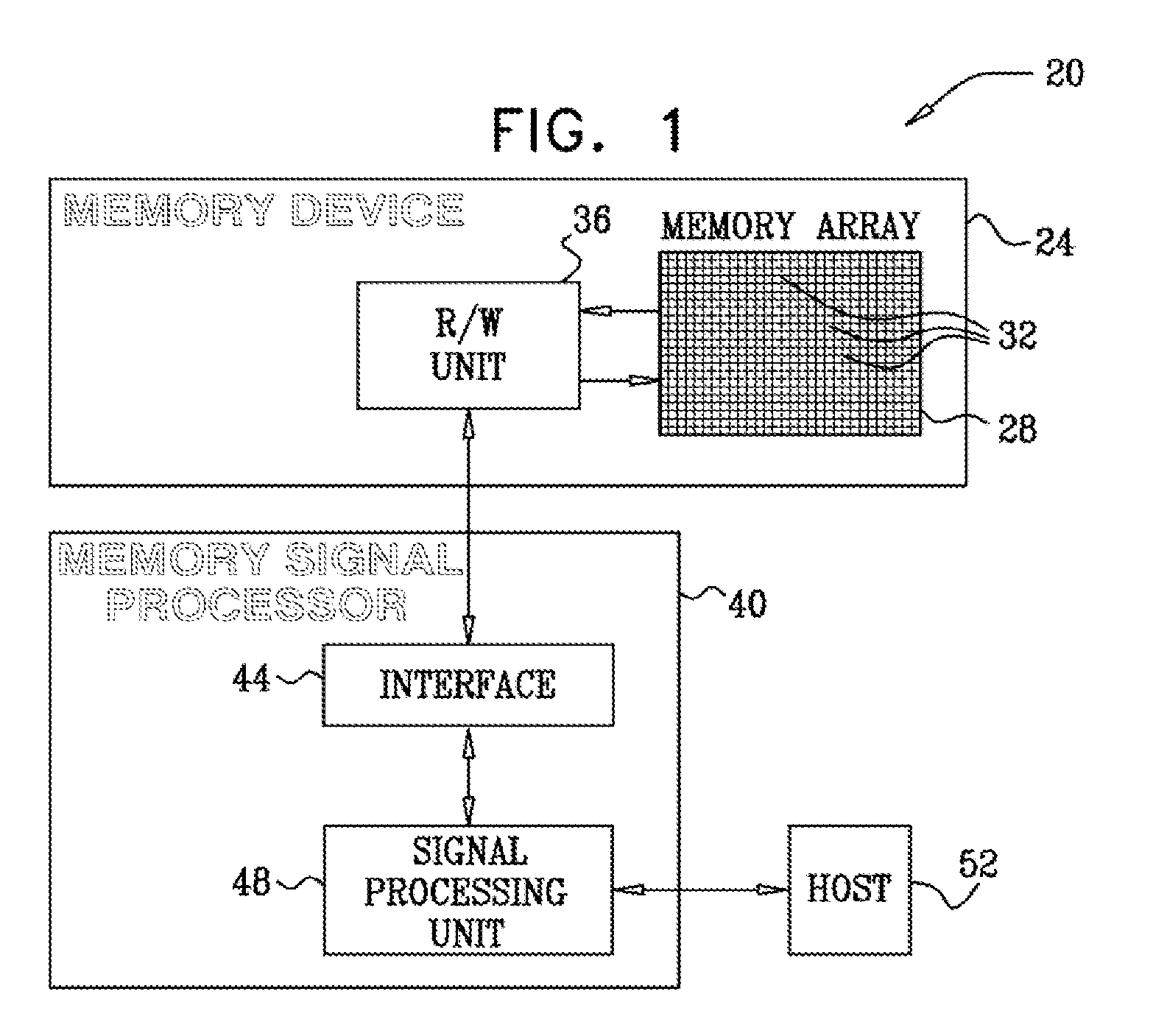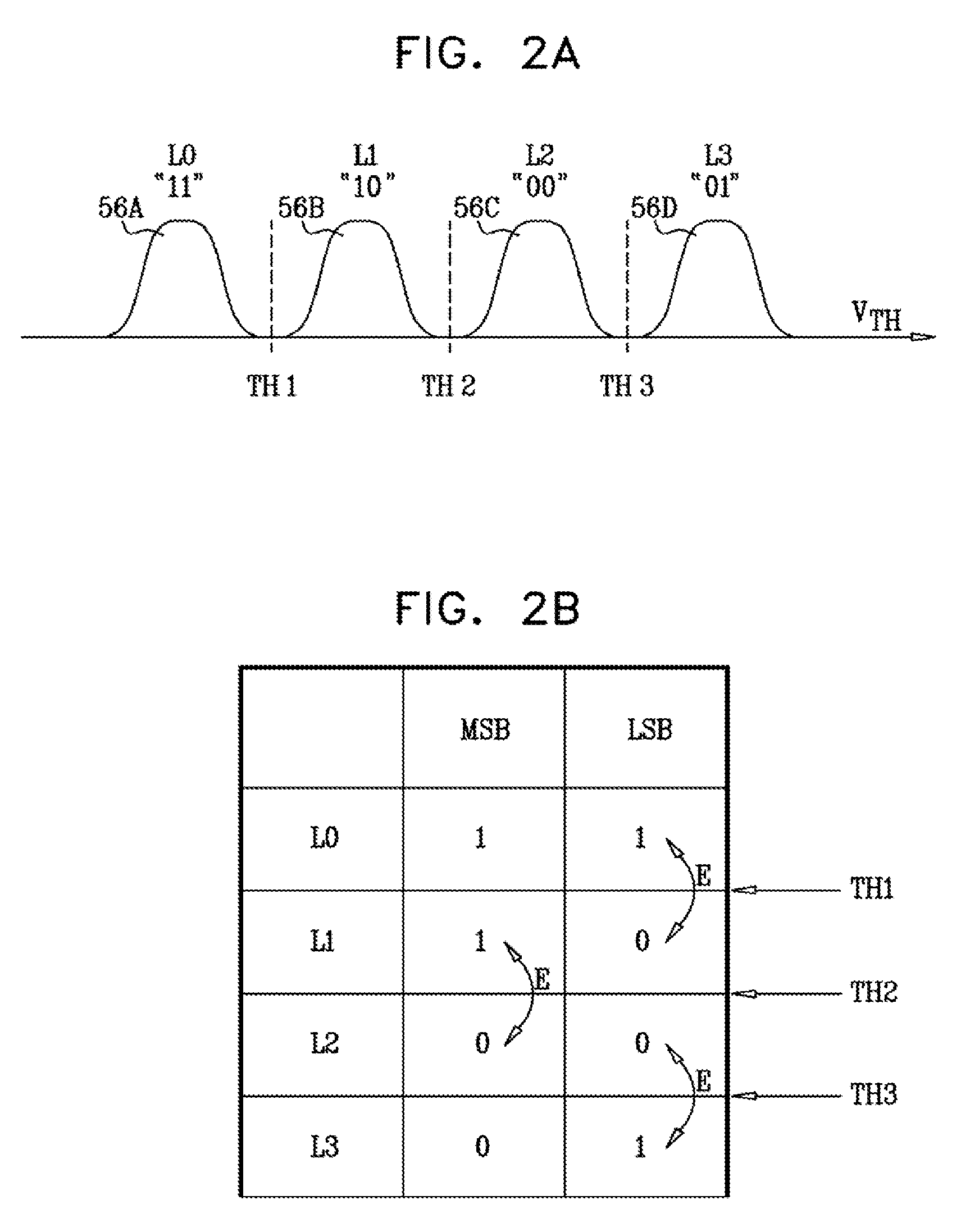Memory device with non-uniform programming levels
a memory device and programming level technology, applied in the field of memory devices, can solve the problem of non-uniform threshold voltage distribution of the device, and achieve the effect of reducing the spacing
- Summary
- Abstract
- Description
- Claims
- Application Information
AI Technical Summary
Benefits of technology
Problems solved by technology
Method used
Image
Examples
Embodiment Construction
Overview
[0038]In a typical MLC configuration, each memory cell stores two or more data bits, and the cells are read by comparing their threshold voltages to a set of reference levels. A read error occurs when the threshold voltage of a given cell falls on the wrong side of a reference level and is therefore associated with the wrong programming level. Read errors are most likely to occur between adjacent programming levels. When the assignment of bit values to programming levels uses “Gray coding,” each read error between adjacent levels affects only a single bit.
[0039]Since the number of possible error events that affect each bit may not be the same for each MLC bit, different bits may have different Bit Error Rates (BERs). In some memory configurations, different MLC bits may be mapped to different memory pages, and therefore different pages may have different BERs. Uneven BER is often undesirable, for example because it increases the maximum possible number of errors per page. Wh...
PUM
 Login to View More
Login to View More Abstract
Description
Claims
Application Information
 Login to View More
Login to View More - R&D
- Intellectual Property
- Life Sciences
- Materials
- Tech Scout
- Unparalleled Data Quality
- Higher Quality Content
- 60% Fewer Hallucinations
Browse by: Latest US Patents, China's latest patents, Technical Efficacy Thesaurus, Application Domain, Technology Topic, Popular Technical Reports.
© 2025 PatSnap. All rights reserved.Legal|Privacy policy|Modern Slavery Act Transparency Statement|Sitemap|About US| Contact US: help@patsnap.com



